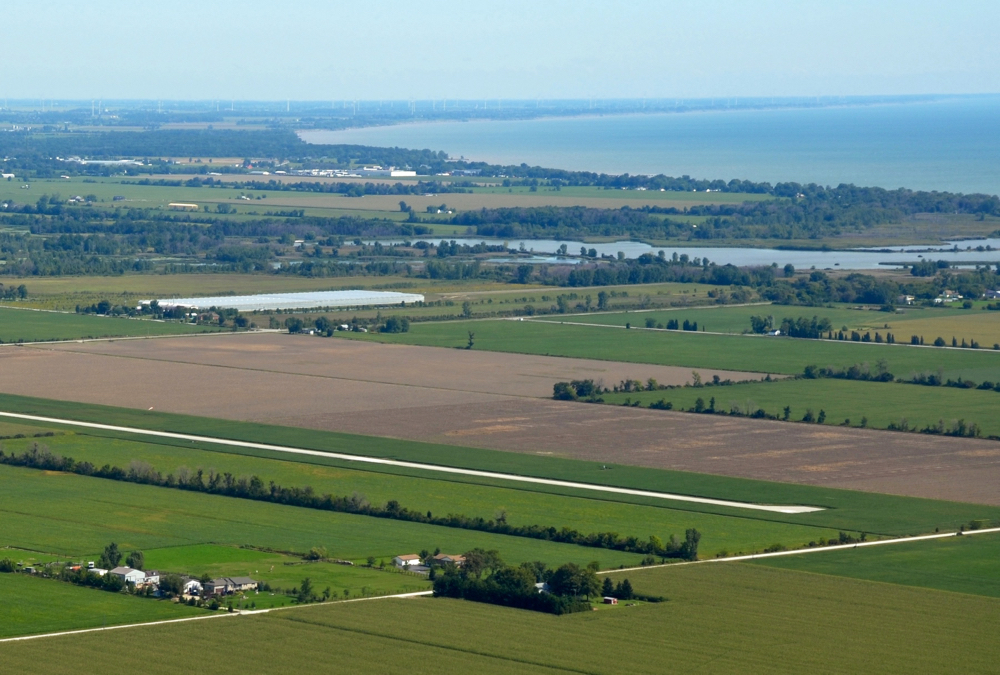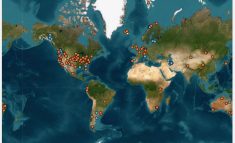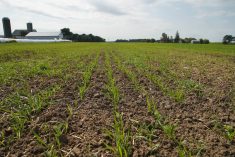As nutrient runoff into Lake Erie and other waterways continues to be a major public environmental issue, veteran agronomists say voluntarily adopting 4R Nutrient Stewardship is more important than ever.
Why it matters: Veteran agronomists say Ontario farmers must voluntarily adopt industry-driven 4R Nutrient Stewardship before more stringent and costly government regulations on nutrient runoff are introduced.
4R nutrient stewardship means applying the right fertilizer source at the right rate and time, and to the right place within the field. This concept has been formalized into a voluntary certification program — for certified crop advisers and ag-retailers — training them to find and document what steps can be taken to improve nutrient management on individual farms.
Read Also

Clean seed garlic promises bigger bulbs and higher returns for growers
Ontario garlic trials show clean seed outshines conventional yields, with stronger drought resilience, reduced virus risk and greater economic outcomes.
Farmers can work with a certified crop adviser to make their acres “4R certified” through a voluntary audit of field conditions and practices, followed by the enactment of practical, evidence-based nutrient management solutions.
Dale Cowan, senior agronomist and sales manager for AGRIS Co-operative and Wanstead Farmers Co-operative, and Stephanie Kowalski, agronomy lead for the Agronomy Company of Canada Ltd., are both involved in the 4R certification program. They say participation allows farmers to document what is being done to manage nutrients, and that documentation provides evidence that the industry is following through on stewardship efforts.
“We can do the verification documentation very easily with modern technology,” says Kowalski.
In a presentation given at the 2019 Southwest Agriculture Conference, both Cowan and Kowalski emphasized the importance of voluntarily participating in 4R Nutrient Stewardship. Nutrient management needs to be viewed through a social and environmental lens, not strictly an economic one, they said.
Current policy from the provincial government aims to reduce phosphorous loading into Lake Erie by 40 per cent. But that number, Cowan said, refers to the small amount of phosphorous being lost, not what’s being applied to Ontario’s fields. For farmers, that amounts to about 0.4 pounds of phosphorous, or 68 cents per acre.
“There’s actually zero economic incentive for you to do anything about your phosphorous… no strip-tiller is going to get paid at 68 cents an acre,” said Cowan.
The cost of inaction, however, will be high.
“Farming is an outdoor sport. We know things can change at the last minute, so there’s always a plan A and a plan B. We need to be able to make those decisions on a timely basis. The opposite of that are prescriptive regulations that tell us how to farm from afar,” said Cowan.
With similar programs being enacted in different American states, Ontario’s 4R initiative is actually based on an Ohio model. Cowan and Kowalski added the agricultural community needs to be ready for renewed discussions with the province and other regulatory bodies on nutrient loading reduction targets, and methods of achieving those targets. Policy discussions are, they said, set to begin again later in 2019.
“There’s lots of people with lots of ideas on how to reduce phosphorous runoff. We need to be at that table with some ideas,” Cowan said.
“If there’s another massive algae bloom next summer — game over.”
Flexibility key to success in Wisconsin
Farmer-led groups devise area-specific phosphorous control solutions
In the state of Wisconsin, farmer-led watershed groups have been a successful mechanism for tackling runoff issues. And according to Dennis Frame — a nutrient loss expert with extensive experience working with farmers to improve their environmental impact — it highlights how significant a difference adaptable, non-regulatory solutions can make.

“We’re entering an age with government that we’re going to have to start relying on people living on the land,” said Frame during a water quality session at at the Southwest Agricultural Conference.
“If everyone switches to what the solution is supposed to be, you’ll just change the problem.”
Wisconsin’s producer groups are so successful, Frame says, because their efforts are based off the specific resource concerns within their local watershed. Once geographically unique concerns are identified through localized research — by individuals like Frame and organizations like the University of Wisconsin — an outreach and education plan is enacted to help producers implement better practices.
Progress between farmers is anonymously tracked and compared as well, which Frame says makes the inherent competitiveness of farmers play a positive reinforcing role. Cost-share programs with local municipalities also help farmers within the watershed groups manage the cost of more significant phosphorous-loss investments.
“What you really have to know is — is it my farm? Will it show what I’m doing?” says Frame.
“If we make people competitive they’ll do the work.”
No such thing as zero
The ability for farmers to flexibly respond is even more important, Frame says, because nutrient runoff is a reality on all farms — regardless of how proactive the management strategy might be. Indeed, even woodlots and other uncultivated areas lose some phosphorous.
Even farmers who are trying to do everything in their power to prevent runoff, he says, almost invariably have at least one problem field.
Those employing a no-till system, for example, can develop soil stratification problems characterized by high phosphorous loss — yet with no soil or sediment movement. Cover crops are similarly not a magic solution, with many examples of fields that are always covered losing high levels of nutrients.
With zero loss not possible, Frame says the question is whether a benchmark — say losses of 2/3 of a pound per acre or less — can be achieved through proactive management. That means farmers need to know where they initially stand.
Calculating how a given field is performing can be achieved by measuring phosphorous levels in the nearest stream on a monthly basis. Multiple samples and good water flow are required to ensure an accurate picture.
Frame added it’s important to remember how significantly the technology used to measure nutrient loss has developed.
“The goals haven’t changed, but I tell everybody the expectations now are higher because our ability to measure performance has gotten really accurate. We’re getting criticized for phosphorous in parts per million, even less… we get into stuff that 20 or 30 years ago we didn’t even talk about,” Frame says.
“It’s actually kind of exciting that we can give this information to farmers because we can make huge improvements in water quality pretty quickly.”















